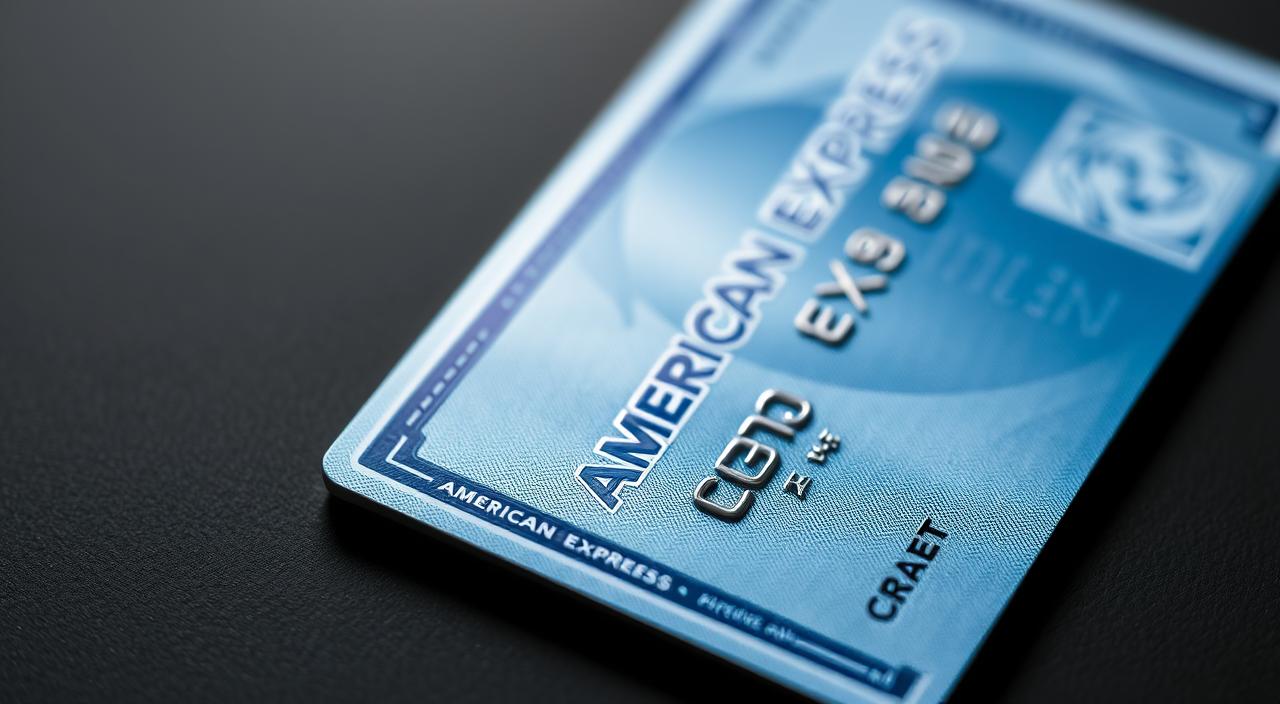American Express, or AMEX, is a big name in financial services. It’s famous for its credit cards, charge cards, and traveler’s cheques. Started in 1850, AMEX was a big player in US credit card transactions in 2016, making up about 23% of them.
AMEX was the first to issue embossed plastic cards in 1959. Like other cards, AMEX has a Card Verification Value (CVV) number. This is a key security feature for online and phone transactions.
Key Takeaways
- American Express uses a four-digit card identification code for their CVV numbers.
- There is a 1-in-10,000 chance of guessing a four-digit CVV code, providing an extra layer of security.
- The AMEX CVV is located on the front of the card, unlike most other credit cards that have the CVV on the back.
- AMEX CVV is distinct from the PIN and CID numbers associated with the card, offering additional security measures.
- Merchants are not allowed to store the CVV number for future transactions, ensuring its use is limited to the current purchase.
What is a Card Verification Value?
The Card Verification Value (CVV), also known as the Card Security Code (CSC), Card Verification Code (CVC), Card Verification Number (CVN), or Card Identification Number (CID), is a short security code. It appears on credit and debit cards. This code is three or four digits long and adds security to online or phone purchases.
The CVV checks if the person making a purchase has the card in hand. It’s harder for thieves to use stolen card details with the CVV. This is because it’s needed along with the card number and expiration date.
Definition and Purpose of CVV
The Card Verification Value (CVV) is a security code found on credit and debit cards. It’s usually on the back, near where you sign. This code helps secure online or phone purchases, where you can’t show the card.
The CVV makes sure the person using the card actually has it. By asking for the CVV, along with the card number and expiration date, it’s harder for fraudsters to make unauthorized purchases.
Different Names for CVV
The Card Verification Value (CVV) is also called other names, including:
- Card Verification Code (CVC)
- Card Security Code (CSC)
- Card Verification Number (CVN)
- Card Identification Number (CID)
These names all point to the same thing. They’re all about a short code that checks if you have the card during online or phone purchases.
Importance of CVV Numbers
CVV numbers are key for keeping credit and debit cards safe, especially when you’re shopping online or over the phone. They check if the person making the purchase has the card in their hands. This helps stop fraud.
Extra Layer of Security
Even if a thief gets your card number, they can’t use it without the CVV. This makes it harder for them to use your card. In 2021, online payment fraud cost businesses $20 billion worldwide. This shows how vital CVV is for security.
Verifying Card Possession
The CVV code proves the person buying something has the card. This is important because stolen credit card numbers are the most common identity theft. By asking for the CVV, stores can make sure it’s really you buying something, cutting down fraud risks.
A 2020 survey found that one-third of customers won’t shop online again if their order is flagged for fraud. This shows how important it is to use CVV numbers right. It keeps customers happy and saves businesses from big losses.
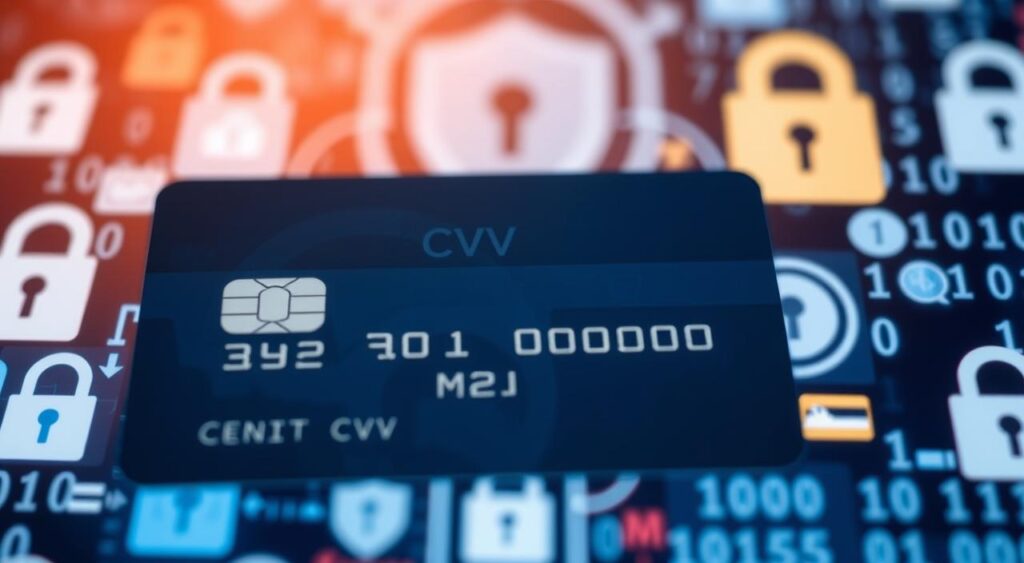
Card Verification Value American Express
The American Express (AMEX) card verification value (CVV) is a key security feature. It helps prevent fraud in online and phone transactions. Like other cards, American Express has a unique CVV number for extra security.
The AMEX CVV is a 4-digit code on the card’s front. This makes American Express cards stand out. It adds extra protection for American Express users.
- The AMEX CVV is not stored by merchants after the transaction. This follows PCI DSS rules.
- Sharing the CVV during a transaction proves the customer has the card. It adds security.
- But, the CVV doesn’t stop phishing scams. This limits its fraud prevention.
The AMEX CVV is a valuable security tool. But, cardholders must keep it safe. Only share it during real transactions. This way, American Express customers get the security they need.
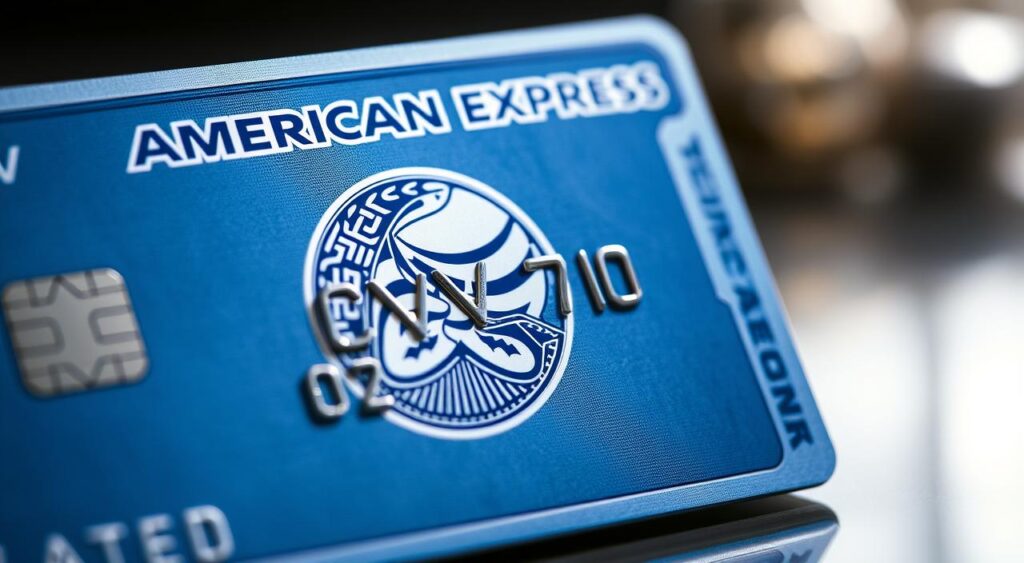
Location of CVV on Credit Cards
The Card Verification Value (CVV) is key to credit and debit card security. It’s a three-digit code found on the back of most cards, near where you sign. This extra security helps protect online and phone purchases.
But, American Express cards are different. On American Express cards, the CVV number is located on the front of the card, usually on the right side above the last few digits of the card number. This special spot is a fraud-fighting move by American Express.
By putting the CVV on the front, American Express keeps it safe from the magnetic strip on the back. This makes it harder for thieves to get to during a card transaction. It shows American Express’s dedication to keeping payments safe.
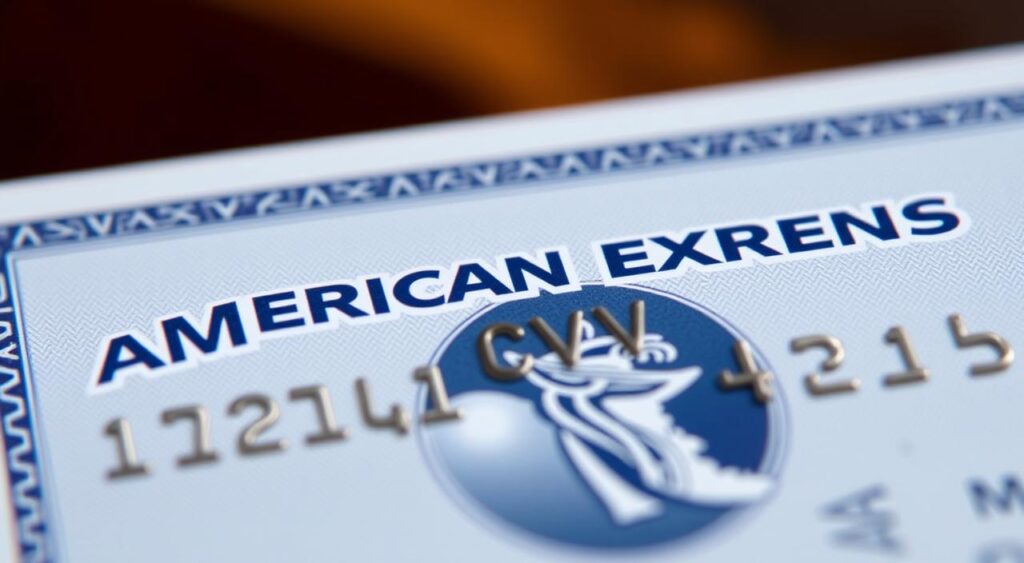
The CVV is vital for checking if a card is real during online or over-the-phone transactions. Keeping this code safe helps prevent fraud and unauthorized card use.
CVV vs. PIN
Understanding the difference between CVV and PIN is key to credit and debit card security. Both are security measures, but they serve different purposes. They should never be confused with each other.
Difference Between CVV and Personal Identification Number
The CVV, also known as the CVV2, CVC, CID, or CSC, is a three- or four-digit code on your card. It’s usually on the back, except for American Express, which is on the front. This code checks if you have the card when you shop online or by phone. It adds an extra layer of security to stop fraud.
The PIN is a number, four to six digits, that you use when you’re in person. It’s for things like ATMs or chip-enabled cards. Only you know your PIN, and it proves you’re the card’s owner.
| CVV (Card Verification Value) | PIN (Personal Identification Number) |
|---|---|
| A three- or four-digit security code printed on the card | A numeric code, usually four to six digits, used to authenticate the cardholder’s identity |
| Used to verify that the cardholder has physical possession of the card during online or phone transactions | Used to confirm the cardholder’s identity during in-person transactions, such as at an ATM or with a chip-enabled card |
| Serves as an extra layer of security to prevent fraudulent activities | Known only to the cardholder and used to confirm their identity as the authorized user |
In summary, the CVV and PIN are not the same. The CVV checks if you have the card for online or phone buys. The PIN is for in-person use, like at ATMs, to prove you’re the card’s owner.
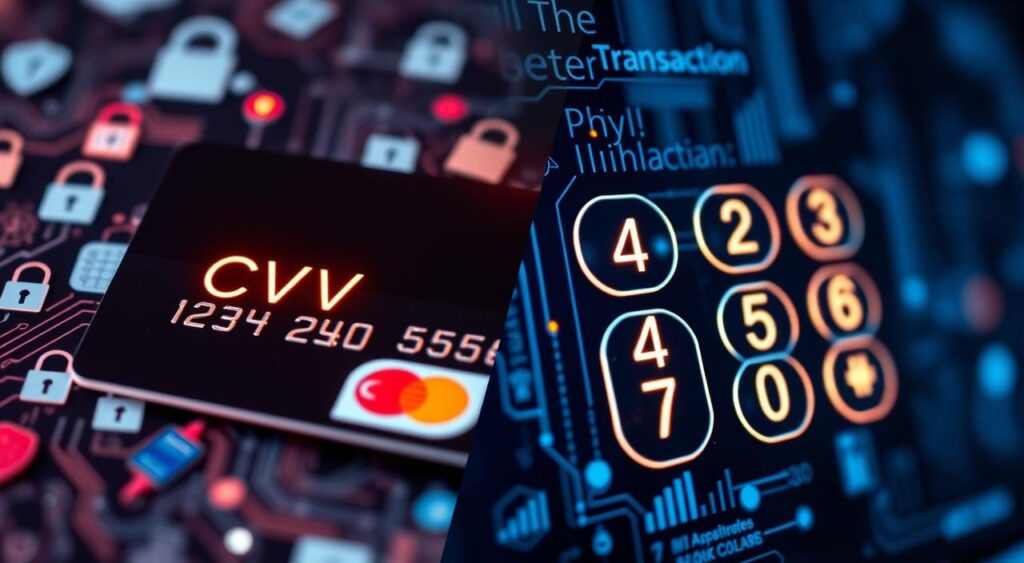
Safeguarding Your CVV
Keeping your American Express Card Verification Value (CVV) safe is key to avoiding fraud. Always share your CVV only when you’ve made a purchase online or over the phone. Never give out your CVV to unsolicited requests, as this could be a phishing scam.
Disclosing Only for Transactions You Initiate
Only give your CVV to the merchant or website you’re directly dealing with. Don’t share it with anyone who calls or emails you out of the blue. Real companies won’t ask for your CVV over the phone or by email.
Shopping on Secure Websites (HTTPS)
Make sure you shop on sites with HTTPS in the URL. This means the site is encrypted, keeping your card info, including the CVV, safe.

By following these tips, you can protect your CVV and use it safely when shopping online or making phone-based transactions.
CVV and Online Transactions
The Card Verification Value (CVV) number is key for online transaction security. It’s a three- or four-digit code on your credit card. It checks if the person making a purchase has your card.
The importance of cvv for online purchases is huge. It makes sure you’re the one buying things online. Online stores ask for your CVV to check if the purchase is real.
- Credit cards in the United States have a CVV code for security purposes.
- American Express credit card numbers are typically fifteen digits beginning with 34 or 37, and the CVV code consists of four digits.
- The chance of randomly guessing a three-digit CVV code is 1 in 1,000, and for a four-digit code, it is 1 in 10,000.
When you give your CVV online, you help stop fraud. This extra security is very important today. It keeps your money safe when you shop online.
“The CVV number is a crucial component of secure online transactions, providing an additional layer of protection against unauthorized access to your credit card information.”
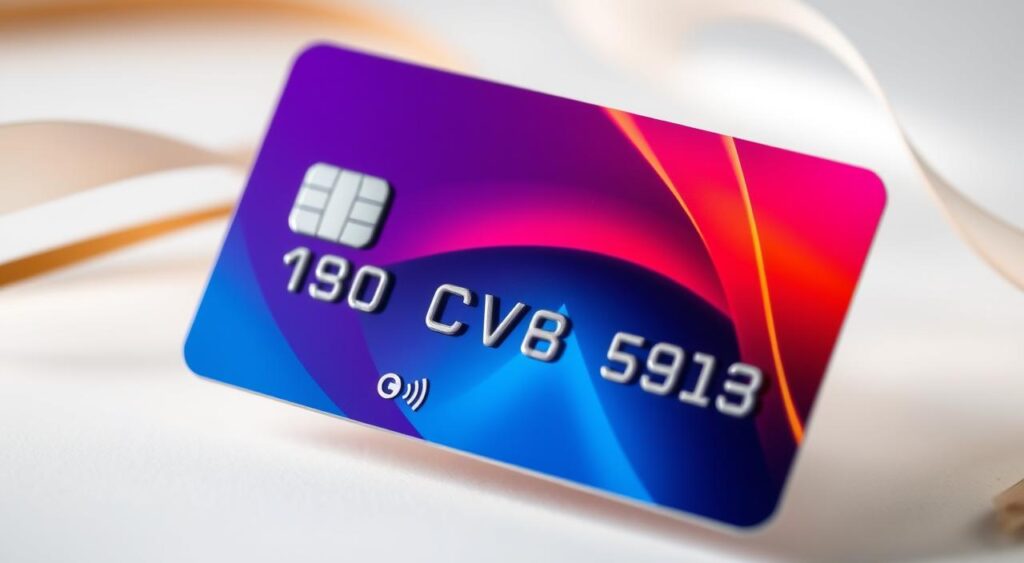
In short, the CVV number is very important for online shopping. It checks if you’re really the one buying things. By using your CVV, you help make online shopping safer for everyone.
CVV and Phone Transactions
The Card Verification Value (CVV) is key for secure over-the-phone purchases. It’s like the CVV for online shopping, proving the buyer has the card. This is important for keeping transactions safe.
When buying over the phone, the seller will ask for the CVV. This is the three- or four-digit code on the card. It adds security, as only the real card owner has this number.
The CVV is very important for phone buys. It helps merchants know the buyer has the card, lowering fraud risks and chargebacks. This check is fast, making the buying process smooth and safe for everyone.
| Statistic | Value |
|---|---|
| Occurrence rate of card chargebacks mitigated by requiring CVV | Significant reduction |
| Verification process time for CVV during a transaction | Within seconds |
| Cards that typically have a three-digit CVV | Visa, Mastercard, Discover |
| Cards that typically have a four-digit CVV | American Express |
Knowing how the CVV works for phone buys helps keep your money safe. Being careful with your card and giving the CVV when asked helps everyone. It makes payments safer and more reliable.
“The CVV adds complexity for fraudsters attempting to create counterfeit cards, making unauthorized transactions more difficult.”
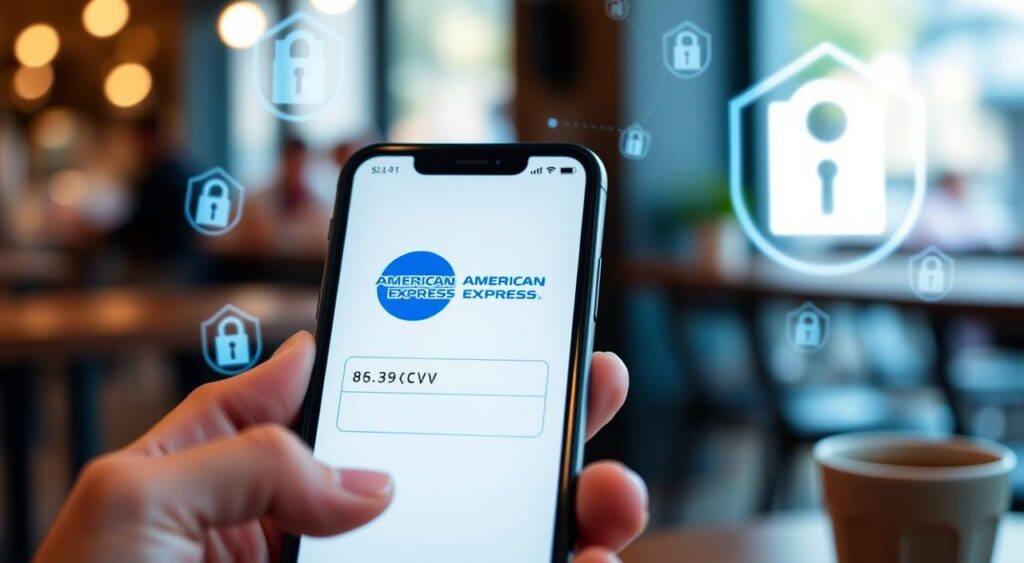
Why CVV Numbers are Unembossed
Credit and debit cards have a special security code called the Card Verification Value (CVV). This code is not embossed on the card. This choice is made to stop fraudsters from getting the CVV by making a card copy.
The CVV is unembossed, unlike the card number and expiration date. These are embossed on the front. This makes it hard for criminals to get the CVV. The benefits of unembossed CVV numbers include:
- Increased security against physical card theft and fraud
- Reduced risk of the CVV being obtained through unauthorized card imprinting
- Enhanced protection for online and phone-based transactions, where the physical card is not present
Keeping the CVV numbers unembossed helps fight certain credit card fraud. It adds a layer of security for cardholders. This design choice is a key part of keeping payment information safe and protecting consumers from unauthorized card use.
Three-Digit vs. Four-Digit CVV
The Card Verification Value (CVV) is key in credit and debit card security. Most cards have a three-digit CVV. But, American Express cards have a four-digit Card Identification Number (CID).
Payment Network Decisions
Each payment network decides on the CVV code length. This choice adds security. A four-digit code is harder for fraudsters to guess than a three-digit one.
American Express Uses Four-Digit Code
American Express cards have a four-digit CVV. This CID adds extra protection. It makes it harder for criminals to use the card without permission.
| Payment Network | CVV Length |
|---|---|
| Visa, Mastercard, Discover | 3 digits |
| American Express | 4 digits |
“The four-digit CVV on American Express cards provides an extra layer of security by making it significantly more difficult for fraudsters to guess the correct code.”
American Express uses a four-digit CVV to boost security in online transactions. This extra step helps protect cardholders from fraud. It makes card-not-present transactions safer.
Retailer Handling of CVV
When you give your Card Verification Value (CVV) number, the merchant checks it to make sure you’re the real cardholder. They verify the CVV as part of the payment process. This step adds an extra layer of security to prevent your card from being used without your permission.
Verification During Payment Processing
Merchants must include the CVV in the payment request they send to the card issuer. This lets the issuer confirm that the person making the purchase has the card. The CVV check helps lower the risk of fraud, especially for online or phone purchases.
No Storage of CVV Numbers
Even though merchants need the CVV to complete the transaction, they can’t keep it. Keeping the CVV would be a big security risk, as it could lead to fraud. The CVV is only used for the transaction and is not kept by the merchant after it’s processed.
To sum up, merchants need the CVV to confirm the card is with the customer, but they can’t store it. This keeps both the merchant and the customer safe from misuse of sensitive card data.
| Statistic | Value |
|---|---|
| Ecommerce sales are projected to reach | $632 billion |
| Card-not-present (CNP) fraud is predicted to increase by | 14% in the next four years |
| American Express cards have a | four-digit CVV code on the front |
Guessing CVV Numbers
The Card Verification Value (CVV) is a key security feature. It helps protect against fraud, especially in online and phone payments. Guessing a CVV number by chance is very unlikely. This makes it a strong defense against unauthorized card use.
Probability of Random Guessing
For a standard three-digit CVV, guessing the right code is 1-in-1,000. You’d need to try 1,000 times to have a small chance of getting it right. For American Express’s four-digit CVV, the chance drops to 1-in-10,000.
Merchant Security Measures
Merchants use strong security to stop fraud. They lock accounts after a few failed CVV tries. This stops anyone from guessing the CVV by trying many times.
The way CVVs are made and the security steps merchants take make guessing them very hard. This shows how good CVV is at protecting against fraud. It’s a key part of keeping cards safe online and over the phone.
Replacing a Compromised CVV
If you think your card verification value (CVV) has been stolen, act fast. Call your card issuer right away. They will cancel your card and give you a new one with a fresh CVV. This keeps your money safe from fraud.
Contacting Card Issuer for New Card and CVV
Getting a new card and CVV is easy if your CVV is stolen. Here’s how to do it:
- Call your card issuer, either by phone or online, and tell them about the CVV theft.
- They will cancel your card and send a new one with a new CVV. This keeps your card info safe.
- You might get your new card fast, depending on your issuer’s rules. This helps you keep using your card without pause.
- When you get your new card, update any automatic payments or digital wallet info. Make sure to include the new CVV.
Acting fast and working with your card issuer can help you replace a stolen CVV. This keeps your money safe from thieves.
| Card Network | CVV Location | CVV Length |
|---|---|---|
| Visa, Mastercard, Discover | Back of the card | 3 digits |
| American Express | Front of the card | 4 digits |
American Express cards have a four-digit CVV on the front. Other big card networks like Visa, Mastercard, and Discover have a three-digit CVV on the back.
Knowing how your American Express card works helps protect your CVV. If it gets stolen, you know how to replace it.
Conclusion
The American Express Card Verification Value (CVV) is a key security feature. It helps protect cardholders from fraud, especially in online and phone transactions. The AMEX CVV number is on the card’s front and checks if the cardholder has the physical card.
Knowing the CVV’s importance helps American Express cardholders keep their card info safe. This way, they can enjoy secure transactions.
The CVV adds an extra layer of security. It’s important not to share the CVV. If the CVV is compromised, cardholders should contact their issuer right away.
It’s also crucial to know the difference between the four-digit CVV on American Express cards and the three-digit CVVs of other major card networks. By being careful and following best practices, American Express customers can lower fraud risks and keep their transactions safe.
In summary, the American Express CVV is a vital security feature. It protects cardholders and the financial system from unauthorized access and misuse. By managing the CVV correctly, American Express customers can have a secure and reliable payment experience.
FAQ
What is a Card Verification Value?
A Card Verification Value (CVV) is a security code found on credit and debit cards. It’s usually on the back, near where you sign. This code helps ensure the card’s owner is making the purchase.
What are the different names for CVV?
CVV is also called CVC, CSC, CVN, or CID. These names all refer to the same security feature on your card.
Why are CVV numbers important?
CVV numbers add an extra layer of security. They check if the card’s owner is making the purchase. This is especially important for online and phone transactions.
Where is the CVV number located on American Express cards?
The AMEX CVV is on the card’s front, right side. It’s above the last few digits of your card number. This helps protect against fraud.
What is the difference between a CVV and a PIN?
CVV checks if you have the card. PIN checks if you’re the card’s owner during in-person transactions. Think of CVV as a security code and PIN as a personal ID.
How can I keep my CVV secure?
Only share your CVV for transactions you’ve started. Never give it out to unknown callers or websites. Always check for HTTPS when shopping online.
Why are CVV numbers not embossed on credit and debit cards?
CVV numbers aren’t embossed to stop fraudsters. They can’t get the CVV by making a card impression.
Why do some cards have a three-digit CVV while others have a four-digit CVV?
The CVV’s length depends on the payment network. American Express uses a four-digit CVV for more security. This makes it harder for fraudsters to guess.
How do merchants handle CVV numbers?
Merchants check the CVV for transactions. But, they can’t keep your CVV. It’s used only for the transaction and then discarded.
What happens if my CVV is compromised?
If you think your CVV is stolen, call your card issuer right away. They’ll cancel your card and give you a new one with a new CVV.

